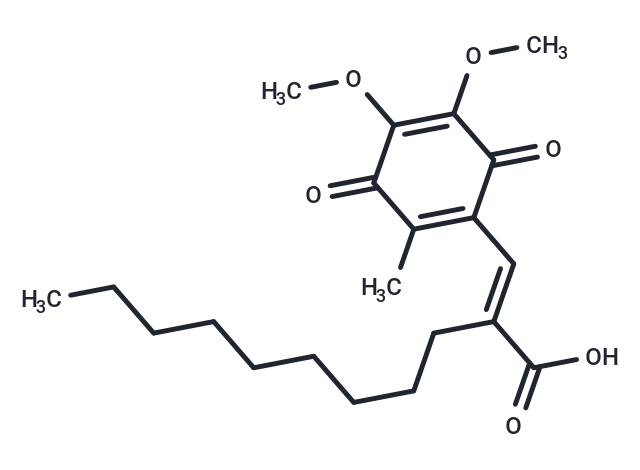Shopping Cart
Remove All Your shopping cart is currently empty
Your shopping cart is currently empty
E3330 is a potent and selective APE1(Ref-1) inhibitor, which suppressed NF-kappa B DNA-binding activity.

| Pack Size | Price | USA Warehouse | Global Warehouse | Quantity |
|---|---|---|---|---|
| 1 mg | $42 | In Stock | In Stock | |
| 5 mg | $98 | In Stock | In Stock | |
| 10 mg | $158 | In Stock | In Stock | |
| 25 mg | $295 | In Stock | In Stock | |
| 50 mg | $469 | In Stock | In Stock | |
| 100 mg | $689 | In Stock | In Stock | |
| 1 mL x 10 mM (in DMSO) | $90 | In Stock | In Stock |
| Description | E3330 is a potent and selective APE1(Ref-1) inhibitor, which suppressed NF-kappa B DNA-binding activity. |
| In vitro | E3330 affects hemangioblast development in vitro via inhibition of Ape1 redox activity. [1] E3330 inhibits the growth of human pancreatic cancer cell line PANC1, XPA1, MIAPACA, BxPC3, and PK9. E3330 also promotes exit of cell cycle in PANC1 cells, inhibits the DNA-Binding activity of HIF-1α and migration of pancreatic cancer cells. [2] In JHH6 cells, E3330 prevents the functional activation of NF-κB via the alteration of APE1 subcellular trafficking and reduces IL-6 and IL-8 expression induced by TNF-α and FAs accumulation through blockage of the redox-mediated activation of NF-κB. [3] |
| In vivo | In mice with endotoxin-mediated hepatitis, E3330 (300 mg/kg, p.o.) attenuates the elevation of plasma tumor necrosis factor activity and protectes mice from liver injury. [4] In Rat model, E3330 (100 mg/kg, p.o.) also protectes rats from severe liver injury induced with endotoxin plus galactosamine. [5] |
| Cell Research | PANC1 cells are placed in one well of a 12-well plate and treated with 5 to 30 μM E3330. After a 24, 48, and 72 h of culture, the cells are washed with PBS and stained with trypan blue, and cell viability is examined by counting the live cell numbers.(Only for Reference) |
| Molecular Weight | 378.46 |
| Formula | C21H30O6 |
| Cas No. | 136164-66-4 |
| Smiles | CCCCCCCCC\C(=C/C1=C(C)C(=O)C(OC)=C(OC)C1=O)C(O)=O |
| Relative Density. | 1.13 g/cm3 (Predicted) |
| Storage | Powder: -20°C for 3 years | In solvent: -80°C for 1 year | Shipping with blue ice/Shipping at ambient temperature. | |||||||||||||||||||||||||||||||||||
| Solubility Information | DMSO: 50 mg/mL (132.11 mM), Sonication is recommended. H2O: < 1 mg/mL (insoluble or slightly soluble) Ethanol: 70 mg/mL (184.96 mM), Sonication is recommended. | |||||||||||||||||||||||||||||||||||
| In Vivo Formulation | 10% DMSO+40% PEG300+5% Tween 80+45% Saline: 2 mg/mL (5.28 mM), Sonication is recommended. Please add the solvents sequentially, clarifying the solution as much as possible before adding the next one. Dissolve by heating and/or sonication if necessary. Working solution is recommended to be prepared and used immediately. The formulation provided above is for reference purposes only. In vivo formulations may vary and should be modified based on specific experimental conditions. | |||||||||||||||||||||||||||||||||||
Solution Preparation Table | ||||||||||||||||||||||||||||||||||||
DMSO/Ethanol
| ||||||||||||||||||||||||||||||||||||
| Size | Quantity | Unit Price | Amount | Operation |
|---|

Copyright © 2015-2025 TargetMol Chemicals Inc. All Rights Reserved.